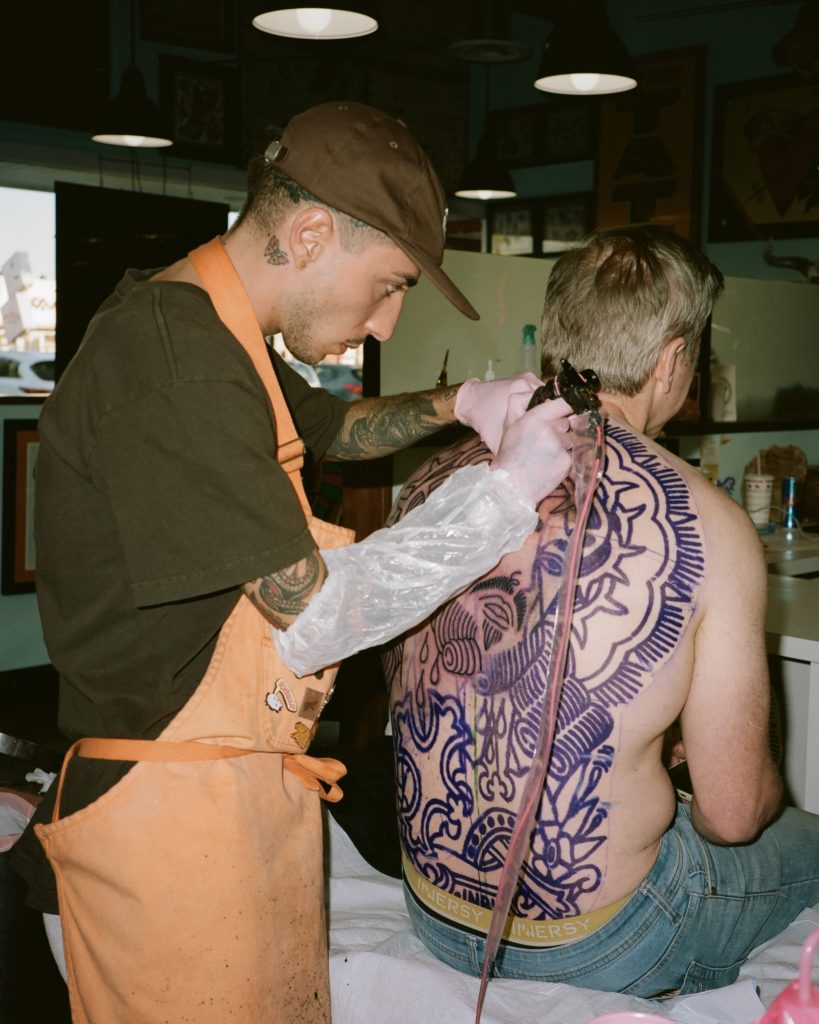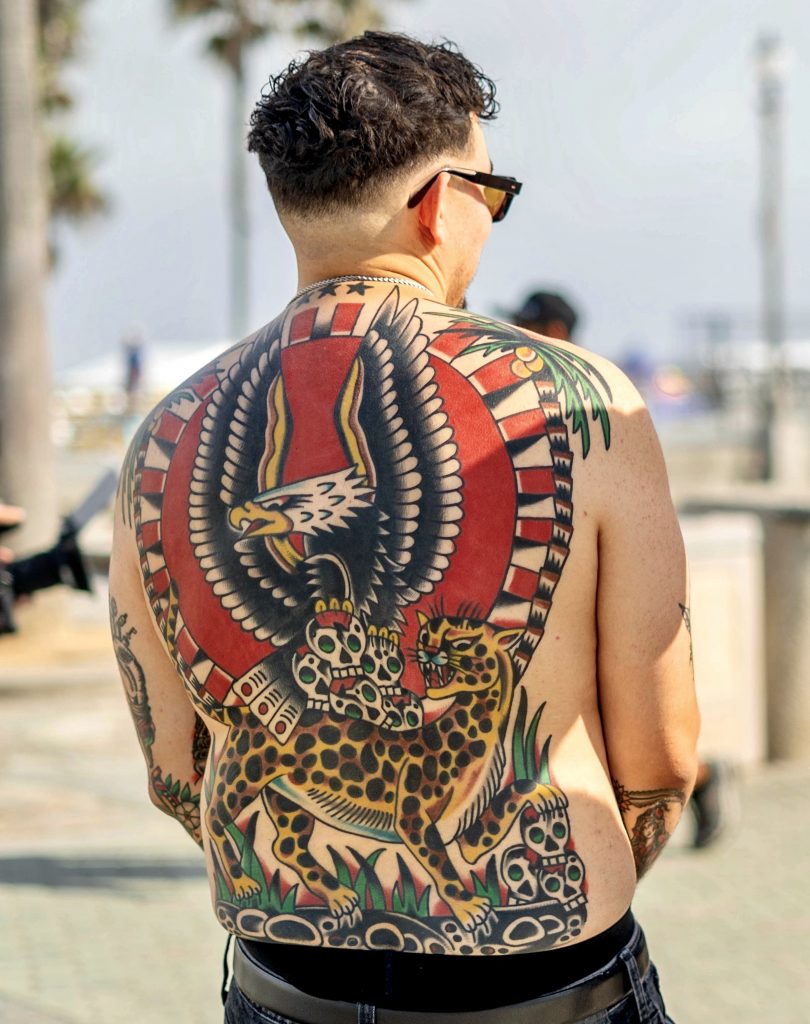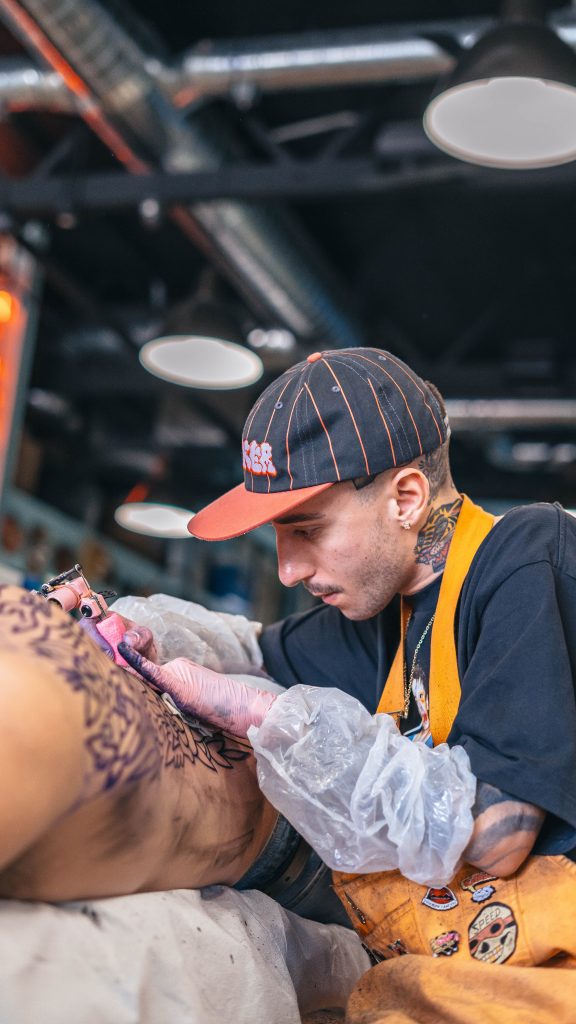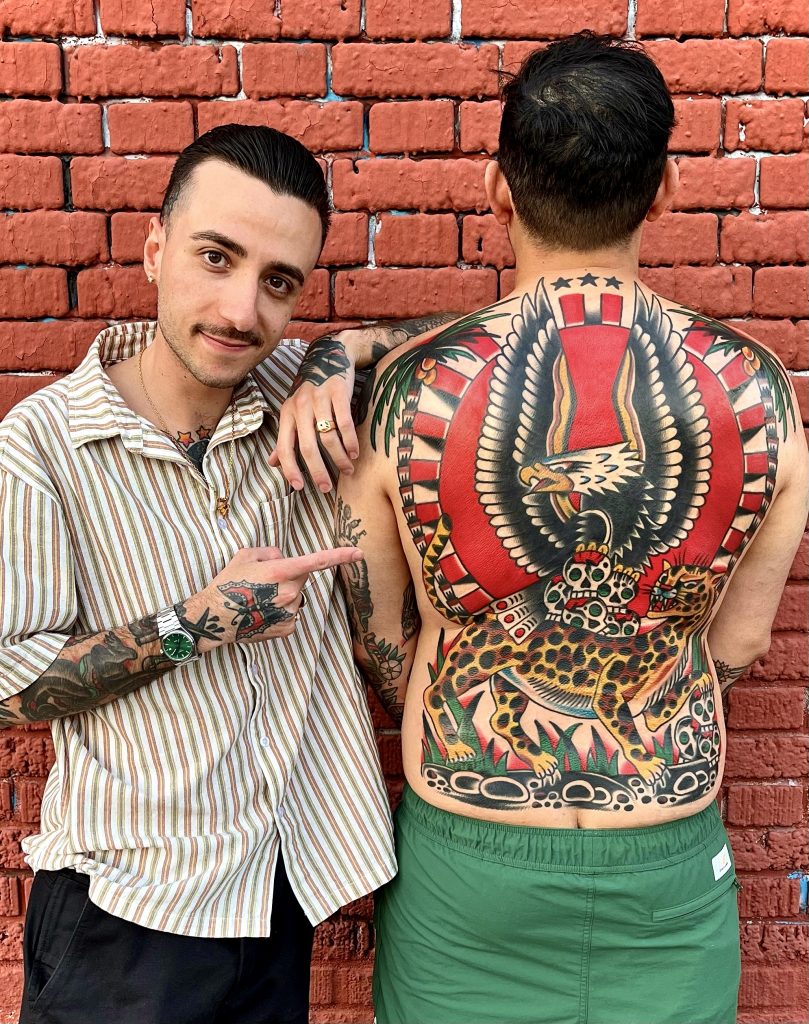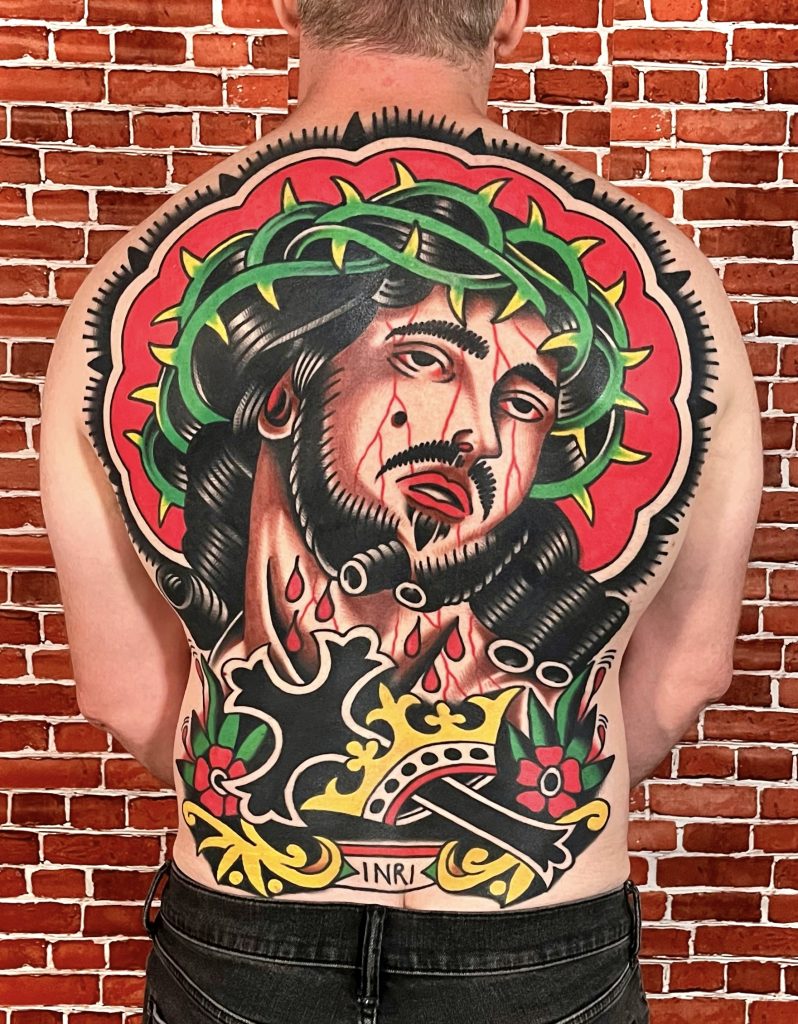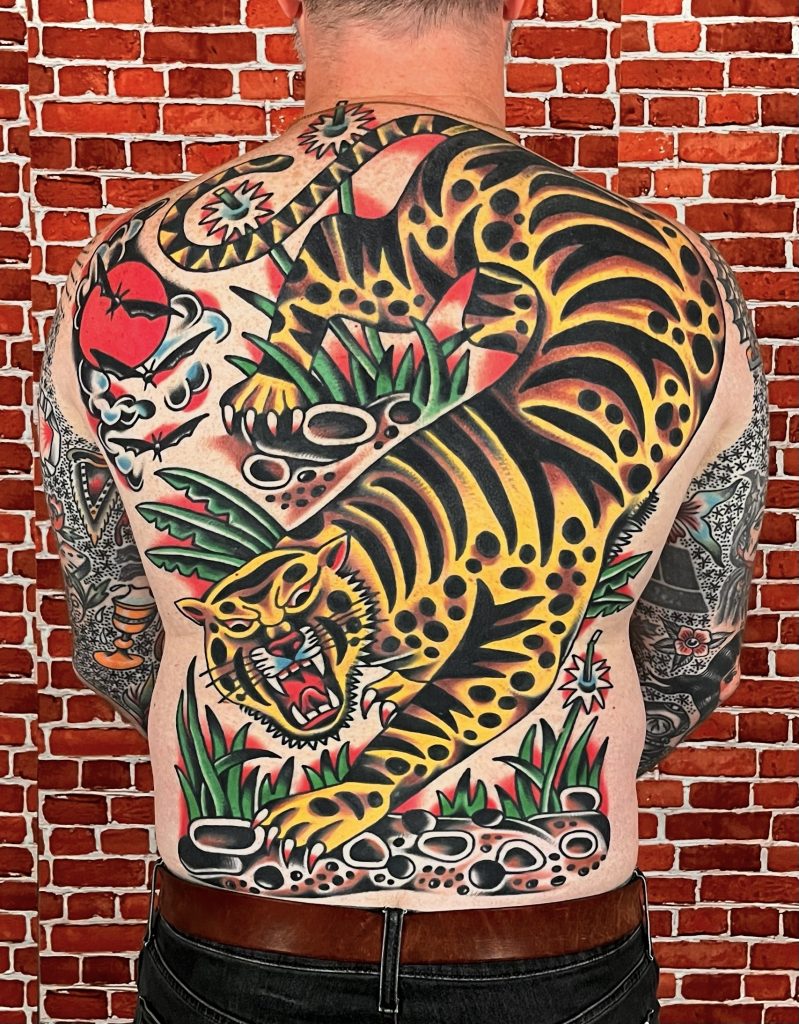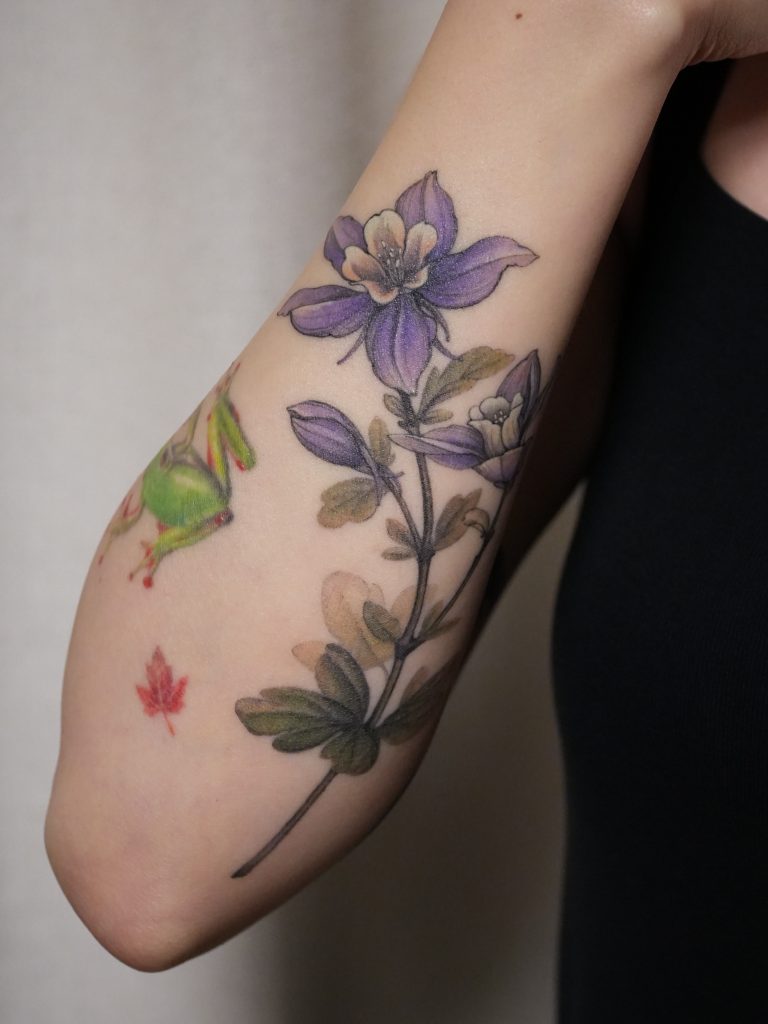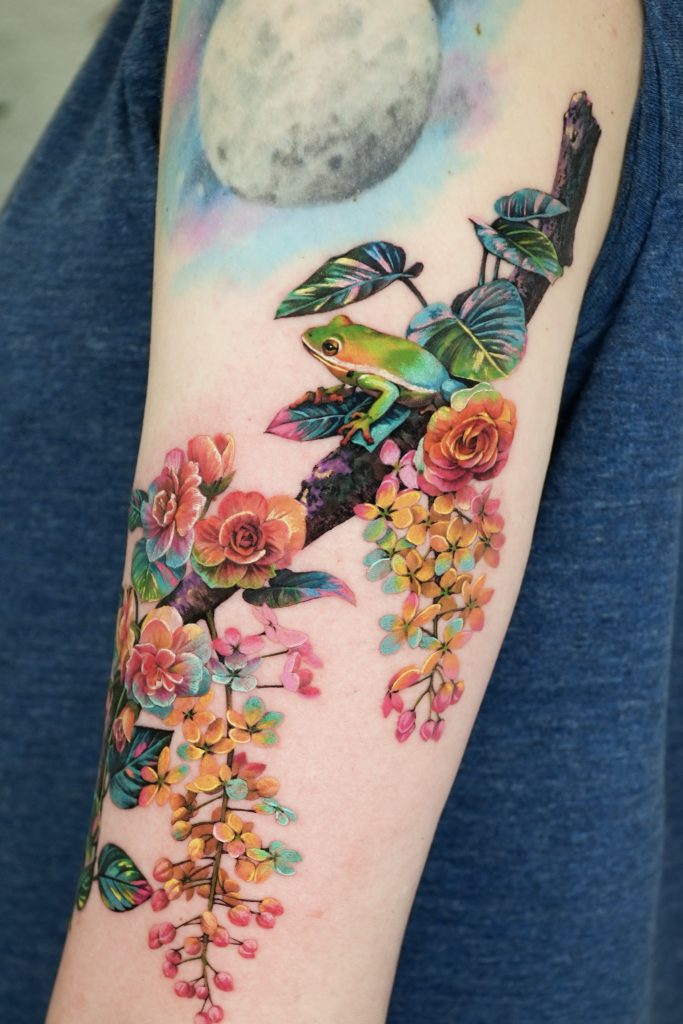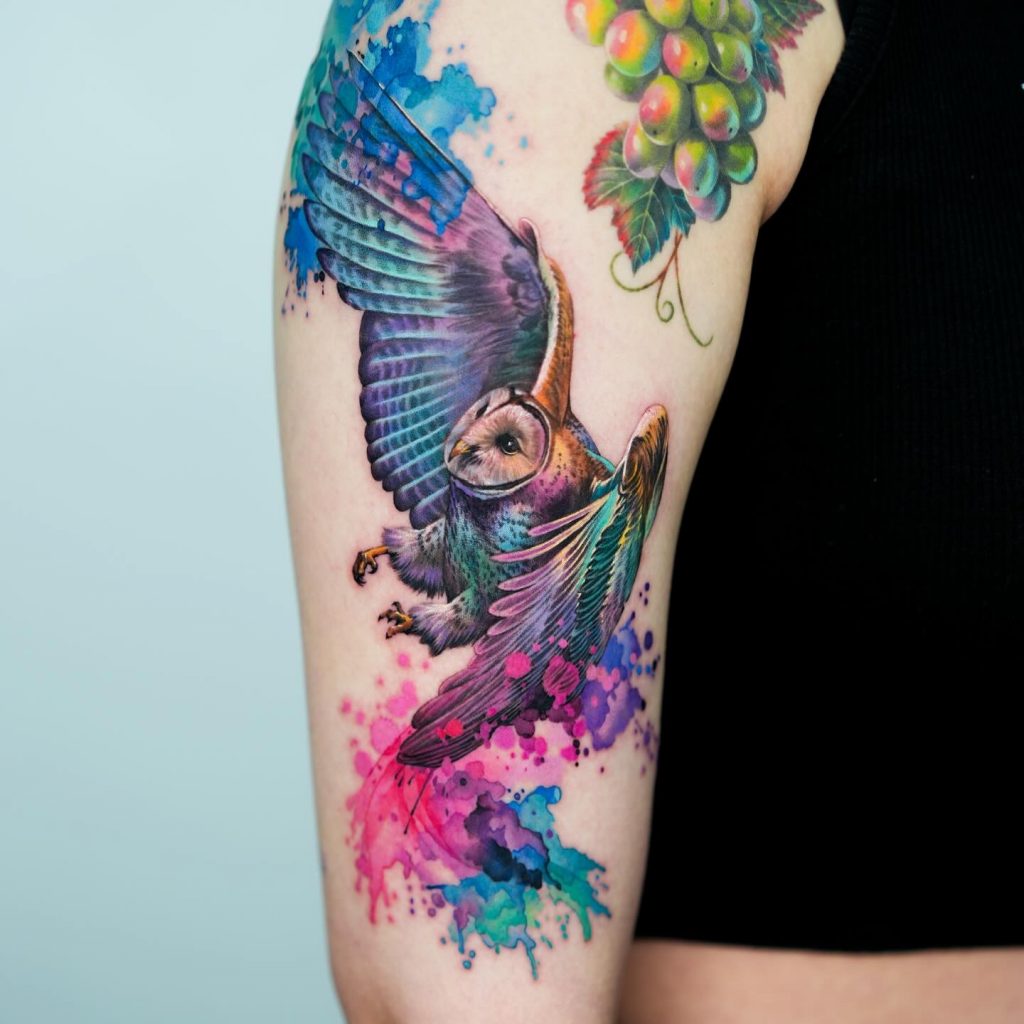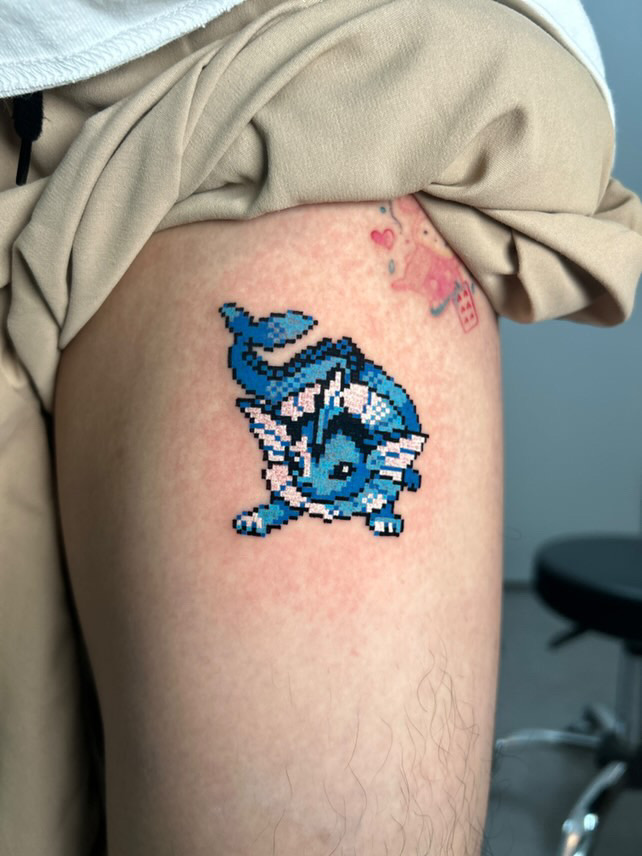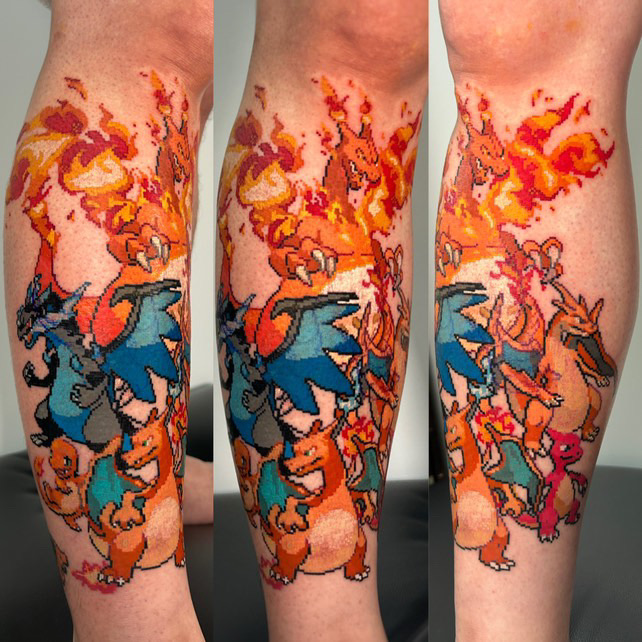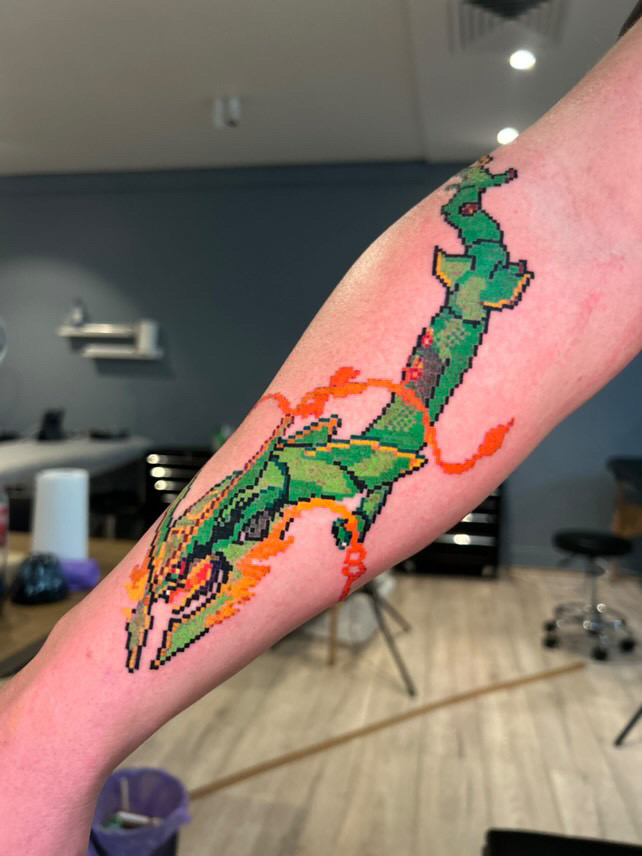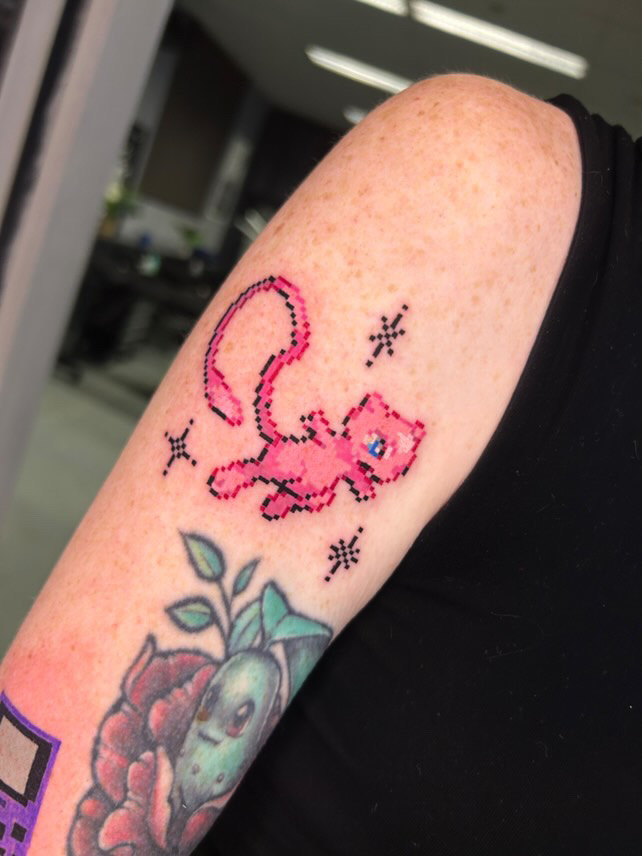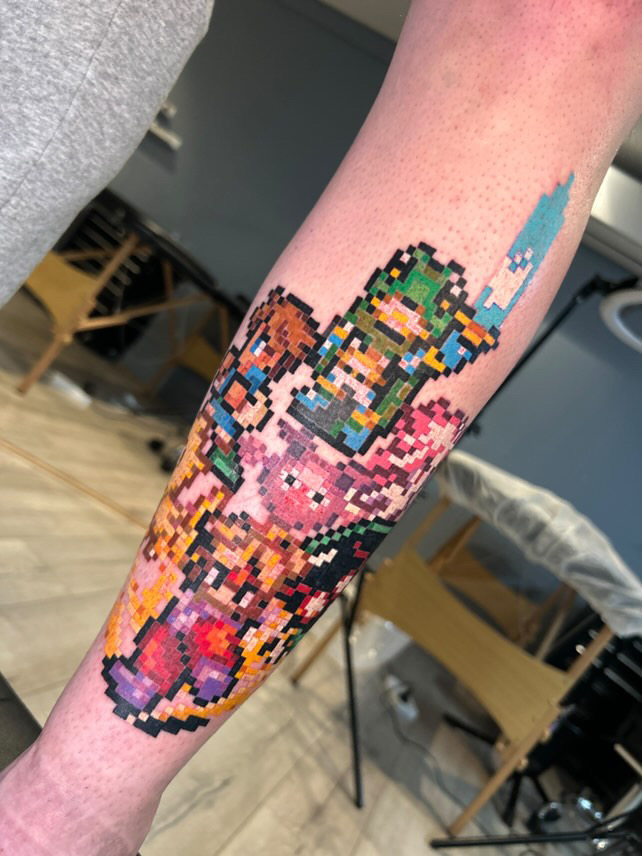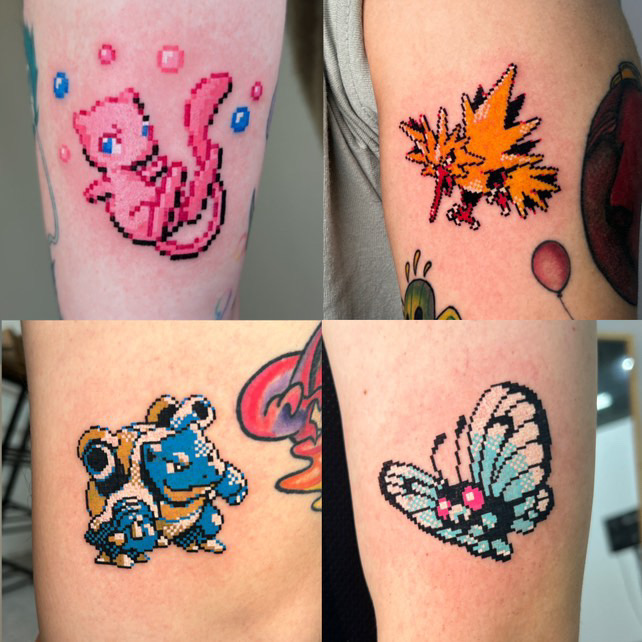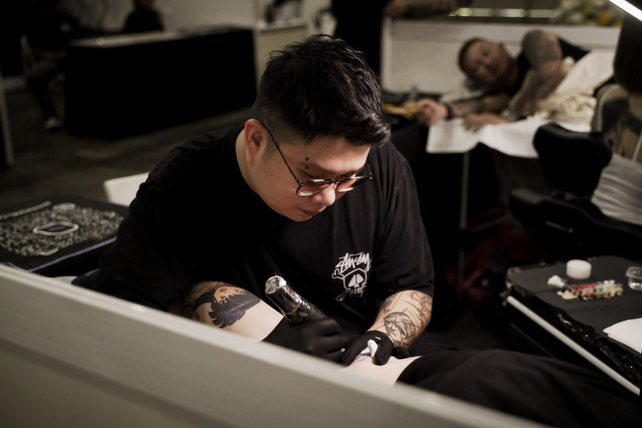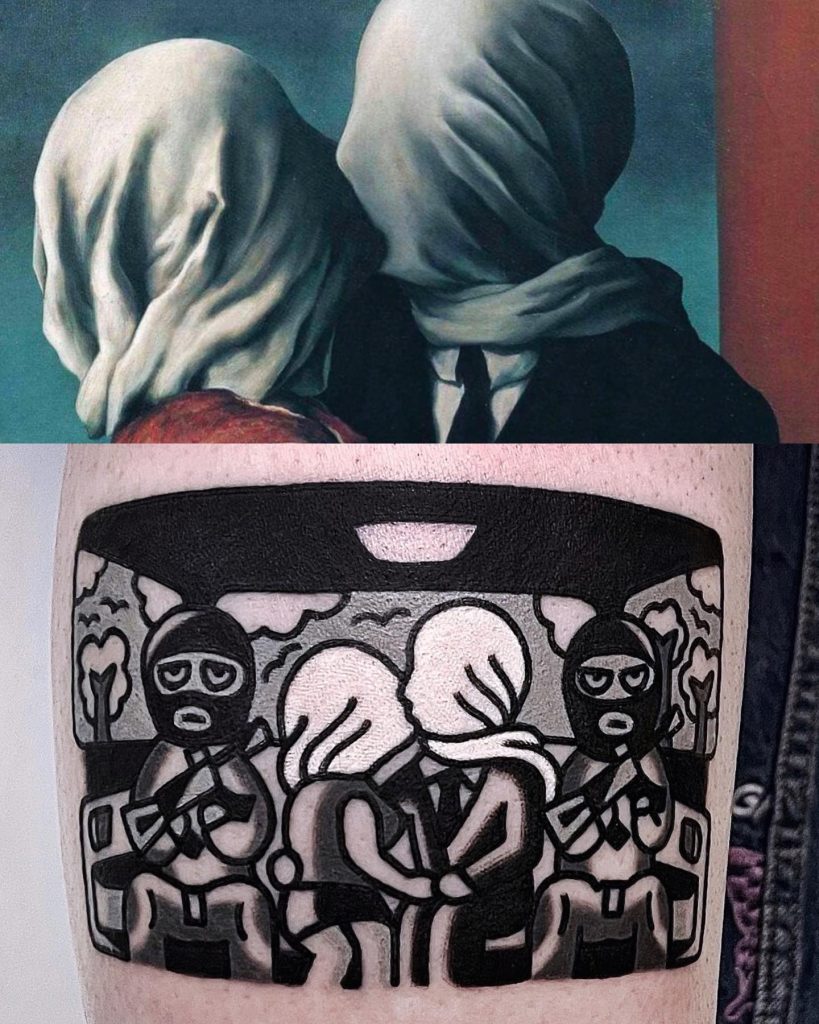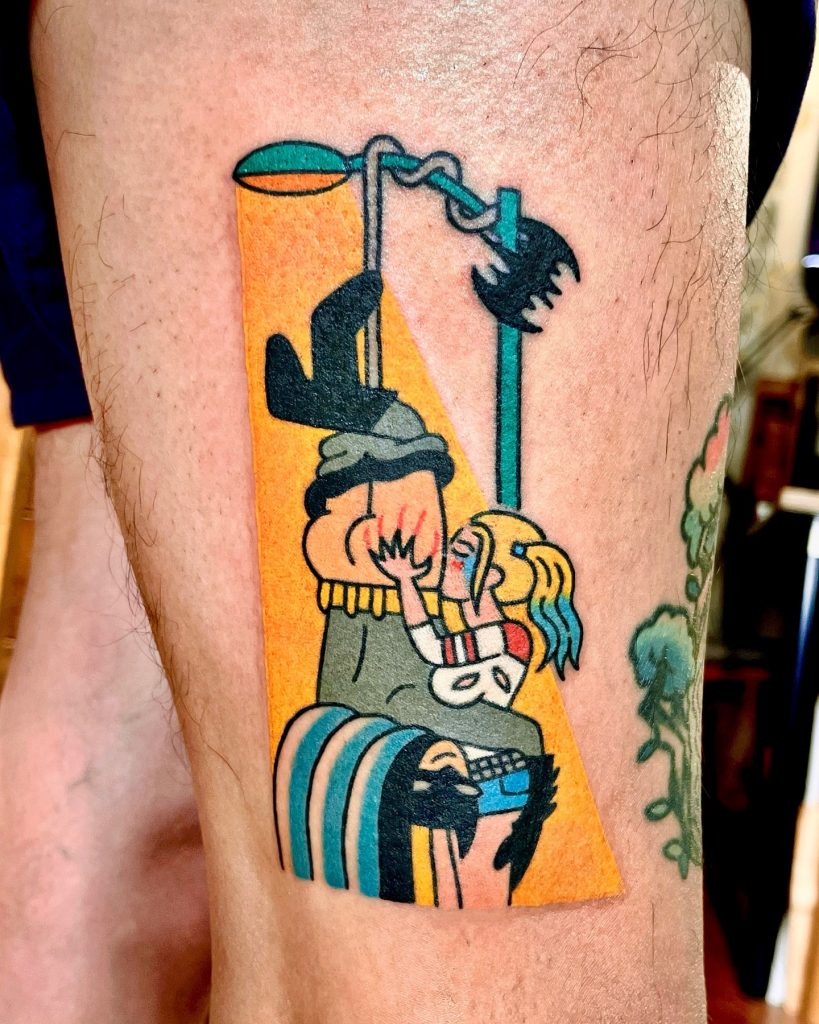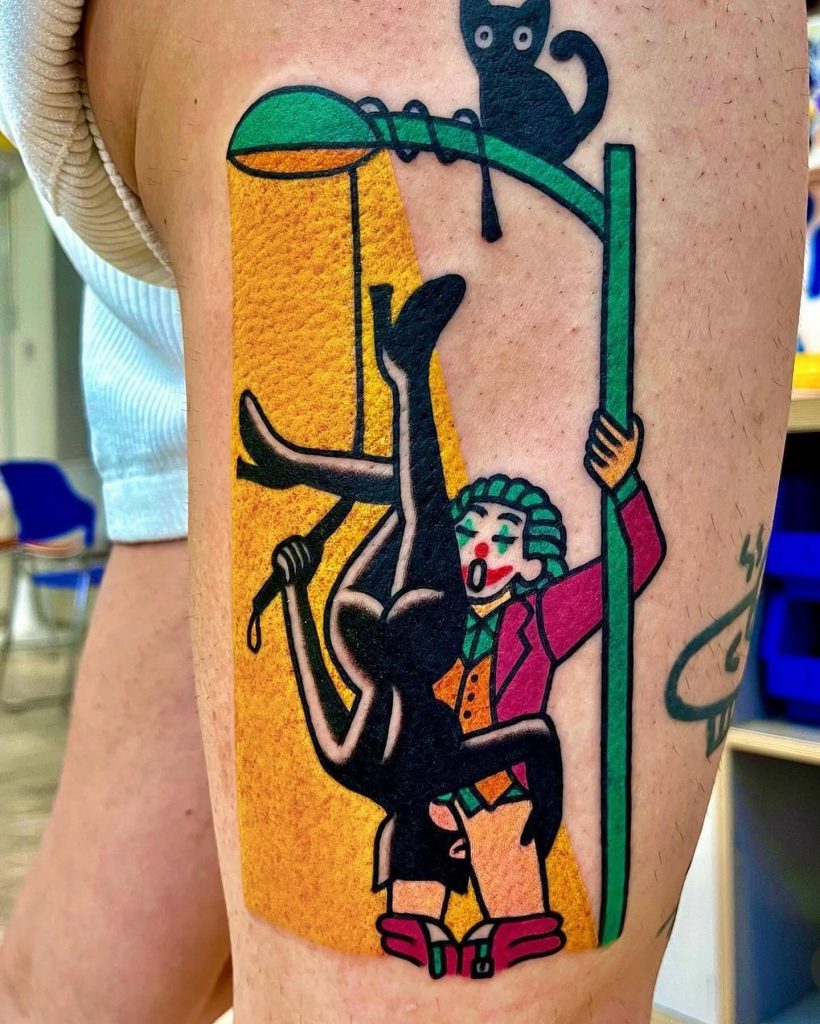Sara Puhto, known as @saggysara on Instagram, is a body positivity influencer who shares real, raw and refreshingly honest content. Social media bombards us with unrealistic beauty standards, making us question ourselves and our bodies – but Sara is on a mission to change that, one post at a time.
Beyond her empowering message, Sara also proudly shows off her bold and beautiful tattoos. It’s common to hear people say they’ll wait to get a tattoo until they look a certain way – a mindset that, unfortunately, persists. But Sara challenges this idea, reminding us that all bodies are worthy of tattoos and that life is too short to put off getting that tattoo!
We sat down with Sara to talk about her content, her tattoos and how the tattoo community has evolved in recent years.
What inspired you to start creating body positivity content?

I used to be a fitness content creator back in 2016 and realised that I was posing, flexing and sucking in all my photos. I was sharing my workouts and “what I eat in a day” videos and realised that I was comparing myself to other content creators who were also posting similar content. I’d compare my body to theirs and assume that they looked flexed all the time, even when they were relaxing their bodies. That’s when I decided to share my relaxed body next to my posed, flexed and sucked in body to show the “reality” behind my Instagram posts. It felt really rewarding and helpful to not only me, but also to my audience – I haven’t stopped since.
I also had an eating disorder and a problematic disordered relationship with working out and started my journey to healing. I now have a healthy relationship with food and working out and have found a balance that is sustainable for me. Posting my body acceptance and body-neutral content was almost like having a public diary of my healing process and sharing my inner thoughts and feelings while recovering publicly. This, I don’t regret one bit, as it’s so beautiful to know that others have healed and started their healing journeys through the help of my content, which means the world to me.
Can you tell us about some of your favourite tattoos and their significance to you?
The majority of my tattoos are because “they looked nice and I wanted it”. But I have my cat tattooed on me, he passed away two years ago and he meant so much to me, I’m still not fully over him passing so it’s comforting to have the tattoo of him to remind me that he’s never really gone. I’m quite spiritual and believe that our passed loved ones stay with us.

@saggysara‘s cat tattoo
I have the words “stay present” and “alive” on my palms, to remind me to be in the moment and to make the most of being alive. I got those tattoos at a really low, rock-bottom moment of my life when I was struggling with depression and trying to gain the courage to leave an abusive relationship. Once I left the abusive relationship and started my healing journey, having those moments of really fixating and looking at my palms helped me refocus my perception of life – always a great reminder!

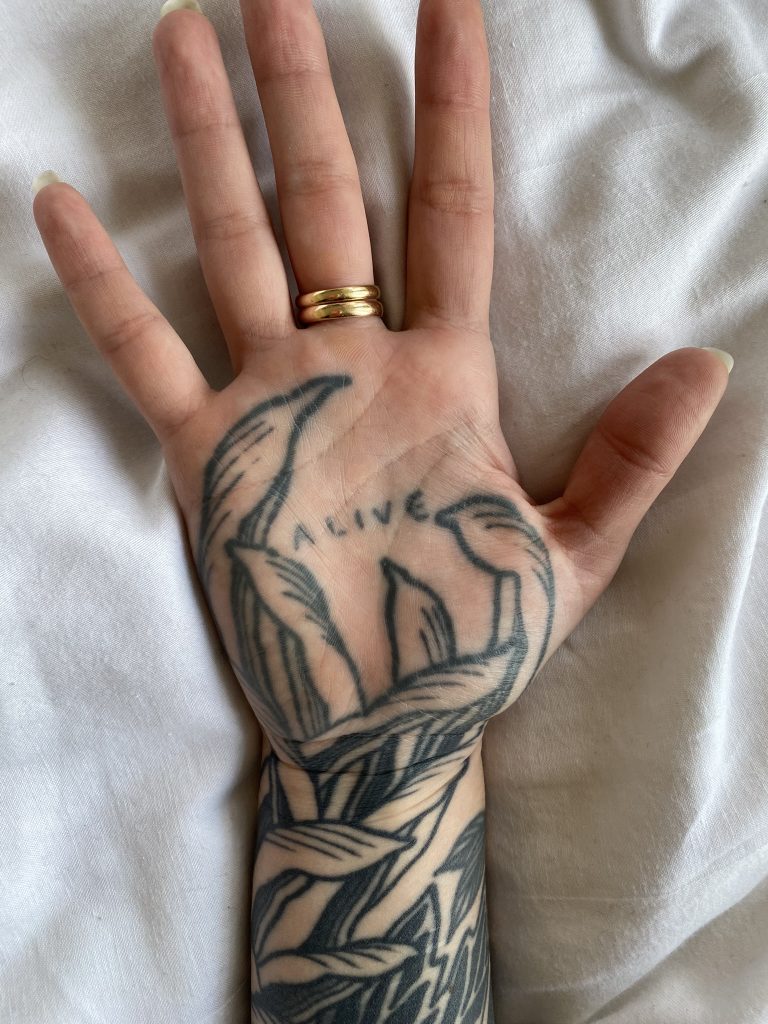
How have tattoos influenced your body confidence?
I used to be really insecure about my torso. I have a wider torso because I’ve undergone scoliosis surgery. It took me such a long time to feel confident to get my stomach tattooed because I was worried it would draw attention to my wide torso. But ever since I started getting it tattooed, I feel so much more confident in my relaxed body!
I also just love looking at myself in the mirror now. I’ve wanted to be heavily tattooed ever since I was a young teenager, so I know little me would be obsessed with all the body art which makes me feel happy and confident!
Do you think tattoos can serve as a tool for improving self-esteem? How so?
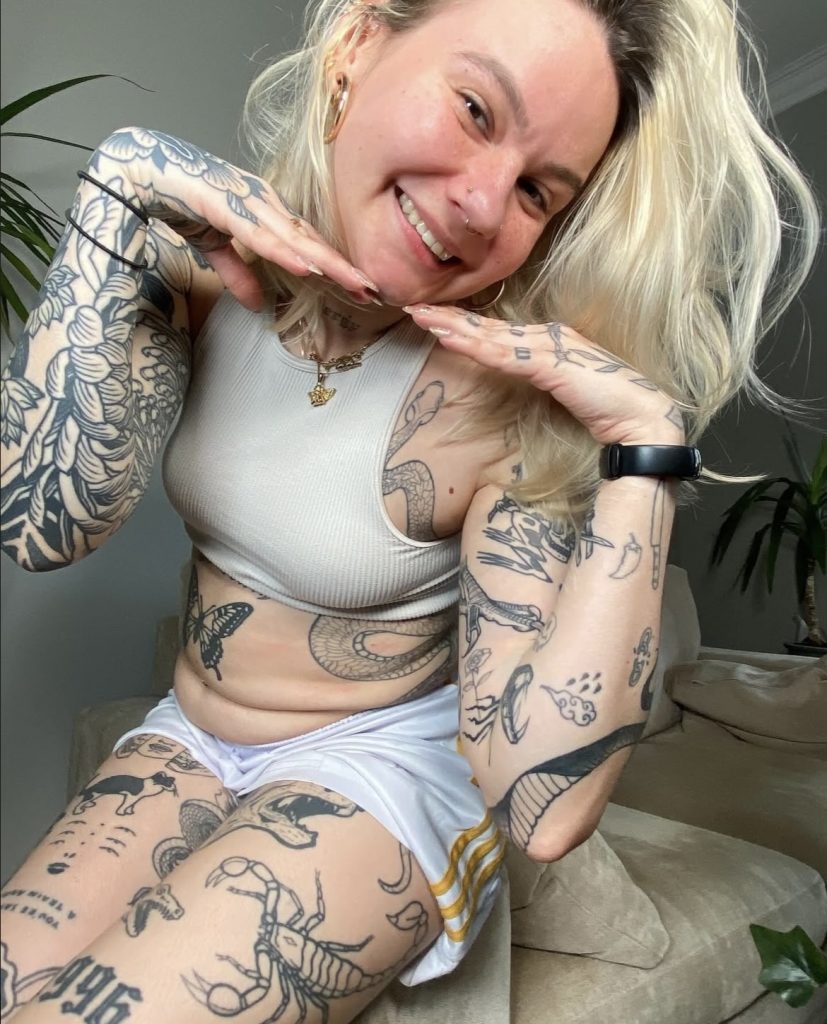
Absolutely! Tattoos can be a powerful way to reclaim your body and express yourself. For many people getting a tattoo can help them embrace parts of themselves they once felt insecure about. It’s like turning your body into a canvas that reflects who you are, and that can be empowering.
Why do you think people feel they need to have a certain body type to get tattoos?
A lot of it comes from outdated beauty standards and the way tattooed bodies are/were portrayed in media. For a long time, most tattoo ads and magazines featured thin, toned bodies, making it seem like tattoos “belong” on a certain type of person. That combined with societal pressure to look a certain way, can make people feel like they need the “perfect” body before getting tattooed.
Do you feel there’s enough representation of diverse body types in the tattoo community?

There’s progress, but there’s still room for improvement. More artists are showcasing tattooed bodies of different sizes, shapes and skin tones, which is great to see. I think social media has helped a lot in normalising tattoos on all kinds of bodies, but mainstream representation, especially in magazines, ads and TV still tends to favour a certain “ideal” look. The reality is, tattoos are for everybody who wants them. Thankfully more inclusive artists and platforms are pushing for diversity, and I think we’re heading in the right direction.
Do you think the tattoo industry is becoming more inclusive? What changes would you like to see?
I’m not a tattoo artist but it’s lovely to see tattoo artists posting more flash and concept pieces on larger bodies on Instagram. I also think the kindness of tattoo artists regarding self-harm scars, stretch marks and other body aspects that might cause someone insecurities is being handled with a lot more compassion and kindness.
From my experience, whenever an artist has seen my old self-harm scars, they have approached it in a way that always makes me feel comfortable, especially when it comes to asking for consent when posting photos of tattoos that have been done on my old self-harm scars.
I’d like to see a wider acceptance of different tattoo styles beyond what’s traditionally considered “mainstream,” encouraging artists to explore and express their own unique visions without judgement. I feel like a lot of artists are doing this and it’s amazing to see, I just wish the public on social media comment sections weren’t so rude and judgemental.
Have you noticed any changes in how tattoo culture intersects with body positivity in recent years?
More people are getting tattoos not just for aesthetics but as a way to reclaim their bodies and tell their personal stories. One of the biggest changes is how scars, stretch marks and other “imperfections” are being embraced in tattoo culture. Instead of hiding them, many people are choosing to highlight these features with tattoos. For example with mastectomies, surgeries, or stretch marks, they’ve used tattoos as a way to celebrate their journeys rather than conceal them
Also, more artists are specialising in tattooing on all body types and skin tones, which wasn’t always the case. It’s really refreshing to see a broader representation of people in tattoo media and marketing.
The body positivity movement has helped shift the mindset from covering up to celebrating. It’s no longer about “fixing” anything, it’s more about embracing who you are, exactly as you are, and using tattoos as a form of self expression.
Do you think there’s a difference between how men and women are perceived when they’re heavily tattooed?
Yes, for sure. Heavily tattooed women tend to be more sexualised than men. Women will often get asked inappropriate questions, for example, “How far does that tattoo go?” or “Are your breasts/nipples/pubic bone tattooed?”. Unnecessary sexual questions asked by strangers (mostly men) that you wouldn’t ask someone normally, especially a stranger.
Due to older societal gender norms women are judged more heavily for being heavily tattooed. For example, getting comments like, “But you were so pretty before!” or questions about how their tattoos will look when they’re older, things that rarely get said to men.
Have you faced any challenges or criticism as a heavily tattooed woman? How do you handle negativity or trolls on your social media platforms?
I never really get trolls but if I do, I usually just ignore them because people have different opinions. Sometimes I’ll reply with a cheeky comment if they’re rude, but I rarely do that anymore because their opinions of my tattoos don’t matter to me because I love my tattoos.
How do you want people to feel when they see your content?

I want people to feel seen. Social media has made us compare ourselves to every single person we see online because we only see the highlights of people’s lives on social media. I want to remind them that it’s okay to be human and have flaws and remind them that life isn’t meant to be curated or perfect.
What advice would you give to someone hesitant to get their first tattoo due to body insecurities?
Every time I’ve gotten a tattoo on a body part that I was insecure about previously, it’s helped me regain confidence. I’d say you’re not alone, so many people feel this way before getting their first tattoo. But one of the beautiful things about tattoos is that they can help you embrace your body rather than hide from it.
If you’re feeling hesitant, take your time. Many tattoo artists today are incredibly supportive and understand how personal this process can be. A good artist will make you feel comfortable.
Also, try to reframe the way you think about your body. Instead of seeing a tattoo as a way to “fix” something, see it as a way to celebrate yourself. The most important thing is that the tattoo makes you happy.
Stay Up to Date with Things&Ink
Things&Ink is an online tattoo magazine celebrating female tattoo culture, highlighting some of the most talented women in the industry, and providing a space for their voices to be heard. Stay connected with us on Instagram and Facebook for the latest updates and features! You can view our other blog posts, here.


